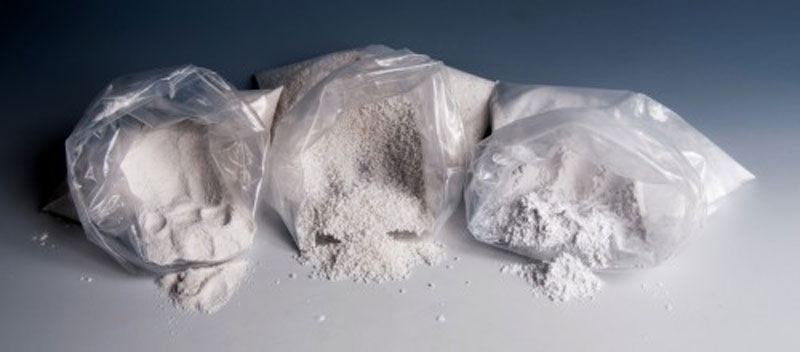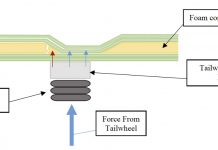Every Glasair and GlaStar kit contains plastic bags of the white powders (guaranteed to raise the suspicions of any DEA agent!) that we know and love as “mill fiber,” “Q-cell” and “cabosil.” But what are these materials really for, anyway? Bruce shares his insight into the true uses of these oft-confused ingredients.
Since beginning to answer the Tech Support phones here at S-H, I have noticed that there seems to be some confusion regarding the various powders included in Glasair and GlaStar® kits and what their proper uses are in creating resin mixtures. The three powders are mill fiber, Q-cell and cabosil. Each one is used to achieve a particular resin mix to be used to accomplish specific jobs. They are not interchangeable.
Let’s start with what is perhaps the least understood of the three chemicals, cabosil. Cabosil is silicon dioxide, or fumed silica. It is a very fine white powder, very light in weight. The function of cabosil is to act as a “thixotropic agent.” This 500 word means— essentially—”thickening agent,” but thickening of a very particular chemical sort. After all, adding mill fiber, Q-cell or pea gravel to your resin will also thicken it, but not thixotropically! Think of a thixotropic agent as a bunch of chemical S-hooks. When introduced to certain liquids (like vinyl ester resin) in proper proportions, it “hooks” onto the molecules of the liquid and holds them together. When agitated (stirred), the thixotropic hooks let go and the gelled mixture liquefies until the agitation stops, at which time it gels again.
So, descending from the pedestal of science to the practical realities of airplane-building, the purpose of cabosil is to get resin to stay put. Its primary use in Glasair and GlaStar® construction is in making a thick resin mix that will hang on the bonding flanges when installing the acrylic windows. Similarly, it can be used in any bonding situation when you’d rather not have resin running down the side wall of the airplane, down the resin brush and down the sleeve of your new shirt (which you should know better than to wear while working with resin anyway). Cabosil can also be useful as a secondary ingredient when mixing Q-cell or mill fiber mixtures, as explained below.
What cabosil is not good for—completely useless, in fact—is adding strength to resin. That job falls to… mill fiber! As the name implies, mill fiber is short, or milled, fibers. In the case of the Glasair and GlaStar®, the fiber in question is glass. When mixed with resin, the mill fiber adds strength just like woven glass cloth does, forming a strong bonding or filling mixture.
Usually enough mill fiber is added to the resin to form a thick mixture that won’t fall off its stir stick. However, such a high ratio of fiber to resin sometimes results in a mix too dry to apply easily into the nooks and crannies, it was mixed to fill. It can, in fact, be too dry to stick properly even if you can get it where you want it. The solution is to add about 20% cabosil by volume along with the mill fiber to achieve the desired mix consistency. With just a bit of cabosil added, the mill fiber mixture will flow well, stick well and still stay put until cured.
Q-cell is simply hollow microspheres, or tiny bubbles of glass. Its purpose when mixed with resin is to form a filler or a sealing agent that is lighter than resin alone and that will stay put until it cures. To use a resin/Q-cell mix as a filler, a thicker mix is desirable, while a thin mix is ideal for sealing foam surfaces and so on. The same comments about adding cabosil to the mix apply to Qcell just as they did with mill fiber. About 20% cabosil by volume added along with the Q-cell will help control the consistency of the mix and make it easier to apply.
As an aside, a little mill fiber added to the resin/Q-cell mix in certain applications will add strength. Most Q-cell mixes are fillers or sealers only, and don’t carry a load. If the application does happen to be used in a load bearing situation, a littl e mill fiber won’t hurt, again maybe 20% by volume.
Note when catalyzing these mixtures to use the total weight of the mixture to calculate the amount of catalyst to use, not just the weight of the resin. Finally, some of the preceding suggestions are not covered in the assembly manuals. This information is intended to supplement the manuals, not contradict them.



